Are you a fitness enthusiast or a dedicated athlete who has suddenly been sidelined by a nagging, persistent pain in your calf and ankle? That sharp or aching sensation that flares up during or after activity could be the result of Achilles tendonitis. The Achilles...
We’ve all seen soccer players sidelined by common but painful injuries like ankle sprains, knee ligament tears, and muscle strains. The combination of running, sudden stops, quick cuts, and potential physical contact makes the body, particularly the lower extremities,...
Spinal cord injuries are among the most serious and life-altering injuries a person can sustain. The spinal cord, a complex bundle of nerves, is the primary pathway for communication between the brain and the rest of the body. When it’s damaged, a patient could be...
Running Exercises: Improve Strength and Reduce Injury Risk

There is a certain comradery between runners that makes races something more than just a solo event. Runners want to find better ways to train and to make their times just a little bit quicker. Here are a few exercises for the runner looking to add 5 minutes of resistance training to improve strength and reduce injury risk.
Running is largely a single leg activity. We think of running as a relatively simple thing to do, it’s just putting one foot in front of the other. Our body, however, is challenged in many ways while running. We need significant levels of coordination and balance to stand on just a single leg, much less bound from one leg to the other.
To better our ability to run, we need to improve our balance (to keep our body in the right position) and strength (to propel us forward and ensure that we do not fall side-to-side). Here are 3 exercises that you can use to get faster, with a lower risk of injury.
EXERCISE 1: Split Squats
Split squats are a great exercise to improve balance, lower body strength, and flexibility. Start by kneeling on the floor. Put one foot in front of your body, flat on the ground, and dig your rear toes into the floor. From there, stand up, keeping your feet in the same position, then come back down to your starting position. Once you complete 10 repetitions, switch which foot is in front. You should feel the front of your thighs working mainly during this exercise.
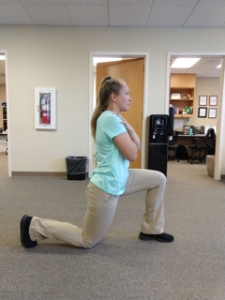
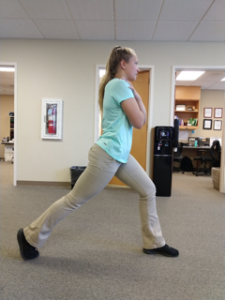
If this exercise is too easy, try putting your back foot up on a 12-16 inch object. This will increase the amount of force the muscles in the front of the leg have to generate.
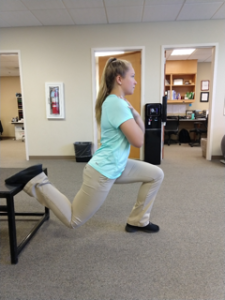
EXERCISE 2: Single Leg Heel Raises
Calf strength and ankle stability is very important for landing properly while running, and reducing the chance of rolling your ankle or straining your knee. This is a relatively simple exercise. Start by standing on one leg. You can stand next to a wall in order to aid balance slightly. Next, lift your heel off the floor slowly, then lower it back down to the floor. You should feel your calf muscles working, as well as your balance challenged. Try 3 sets of 10 repetitions.
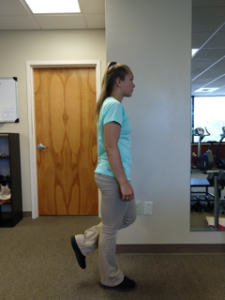
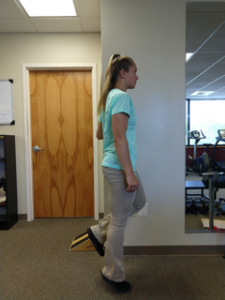
If it’s too easy: Try placing the front of your foot securely on a step. Start the repetition by allowing your heel to drop lower than the level of the step. This increases the ROM, and allows for a greater stretch at the bottom of the movement.
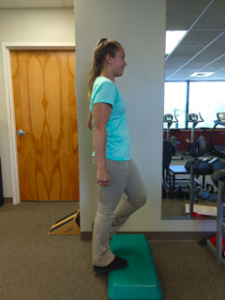
EXERCISE 3: Single Leg Deadlift Holds
Single leg deadlifts are a fantastic exercise for improving your balance, hip strength, and hamstring flexibility. Start standing on one leg, with your toes touching a small weight. Next, bend forward at your hips, while reaching down to touch the weight. Once you touch the weight, hold this position for 10 seconds. Try to keep your back flat, and squeeze your shoulder blades together. The goal is to feel your hamstrings and glutes working, without your lower back kicking on.
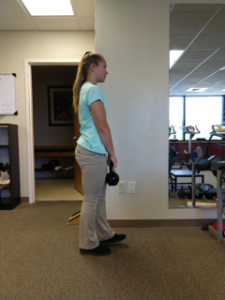
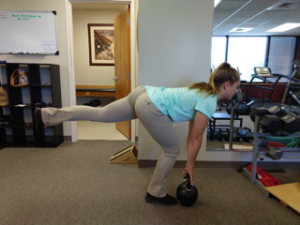
SUMMARY: Try these exercises 3 times a week. They will improve your balance and strength, making hills easier, and giving you better support while on your long runs.
Chris Donohue, PT, DPT, CSCS
Premier Orthopaedics
Learn more about Premier Physical Therapy here.
